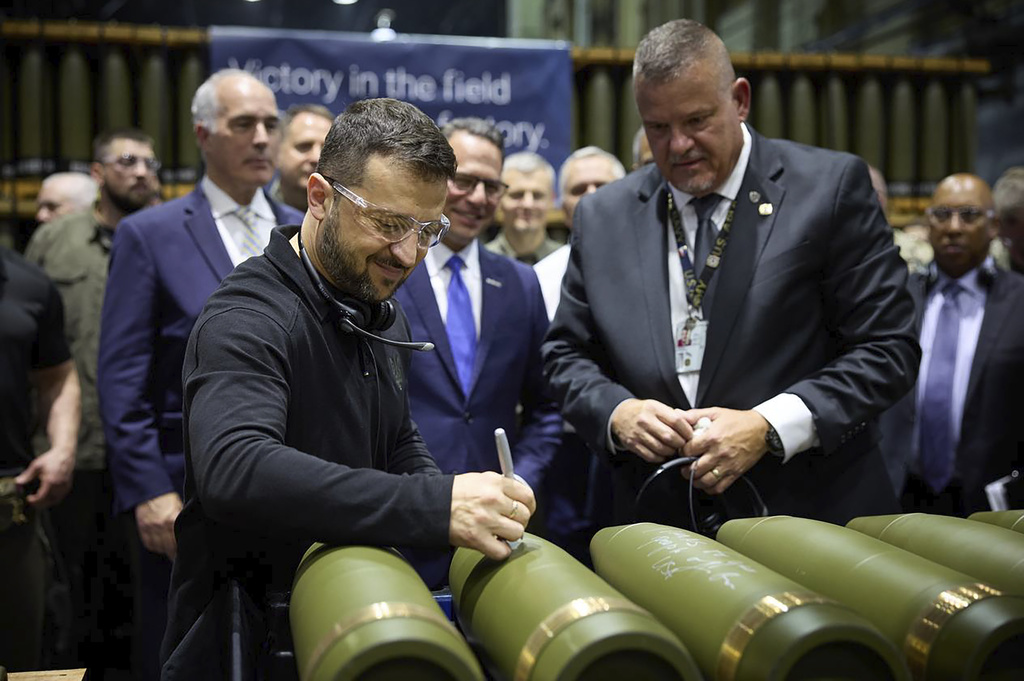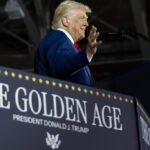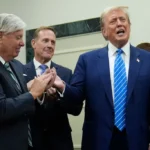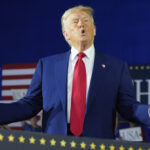Zelenskyy’s War Plan Faces Mixed Reactions From Western Allies \ Newslooks \ Washington DC \ Mary Sidiqi \ Evening Edition \ Ukrainian President Volodymyr Zelenskyy’s ambitious plan to end the war with Russia has received a mixed response from Western allies. The plan includes a formal invitation for Ukraine to join NATO and approval for using long-range Western missiles to strike inside Russia. While some allies support elements of the proposal, others fear escalating the conflict. U.S. backing is vital, but a decision is unlikely before the upcoming presidential election.
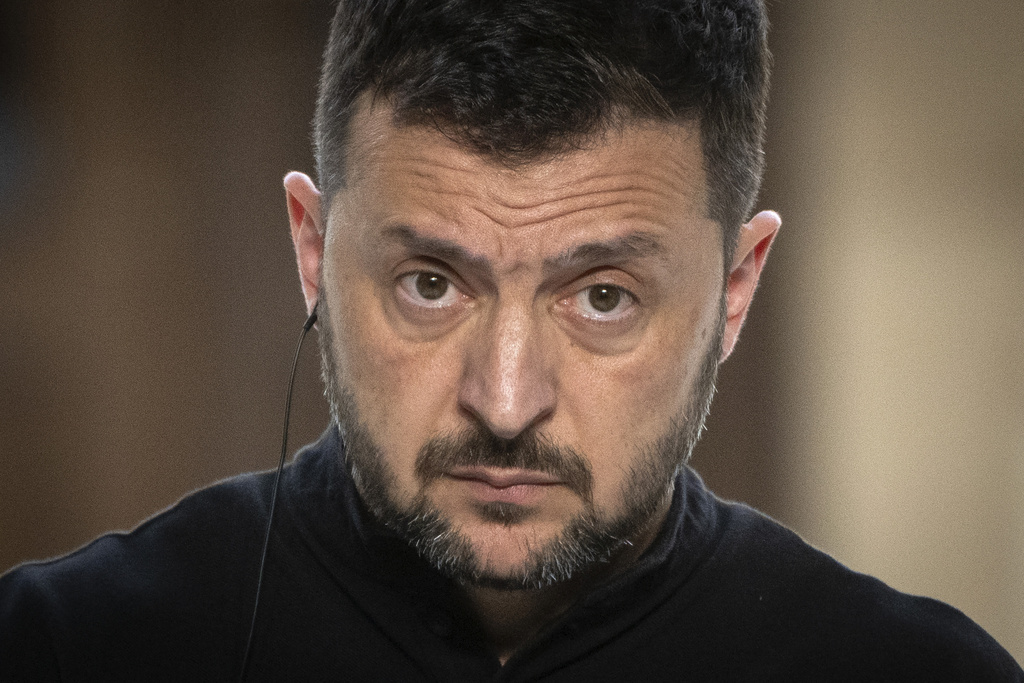
Zelenskyy’s Victory Plan: Quick Looks
- Plan highlights: NATO membership and long-range missile strikes on Russian targets.
- U.S. response: Unlikely to decide before the November 2024 presidential election.
- Allied concerns: Fears of escalation with nuclear-armed Russia.
- Historical context: Echoes Ukraine’s success in gaining support for F-16s and Patriot systems.
Deep Look
What Zelenskyy’s Plan Proposes
At the core of Zelenskyy’s five-point plan is a clear vision to strengthen Ukraine’s military position and secure long-term security guarantees. Two key components include a formal invitation for Ukraine to join NATO and the approval to use Western-supplied long-range missiles to target military sites within Russia. Both proposals have sparked debate, as many of Ukraine’s allies have been hesitant to support such escalatory moves.
The NATO membership invitation is viewed by Zelenskyy as vital to Ukraine’s future security and a deterrent against further Russian aggression. Additionally, the request for long-range missile strikes would allow Ukraine to target deeper into Russian territory, undermining Russia’s logistical networks. However, these steps are seen by some allies as potentially widening the war, particularly with a nuclear-armed Russia.
U.S. Support Is Key
The success of Zelenskyy’s plan largely hinges on the backing of the United States. If the Biden administration supports these proposals, other Western allies may follow suit. However, analysts suggest that the White House is unlikely to make any significant decisions before the U.S. presidential election on November 5, 2024. Supporting such bold steps may not align with voter sentiment during a high-stakes election.
“They seem to be doing very little now and waiting for the election,” said Phillips O’Brien, a professor of strategic studies at the University of St. Andrews in Scotland. “So much of the strategy will live or die in Washington.”
A Step Forward or a Risky Gamble?
Zelenskyy’s plan has been described by analysts as a necessary step to push Ukraine’s military efforts forward. Justin Crump, a former British tank commander and current head of Sibylline, a strategic advisory firm, noted that the plan may not offer immediate battlefield solutions but provides Ukraine with the necessary resources to sustain its war of attrition against Russia.
“The side that falls last wins,” said Hlib Voloskyi, an analyst from the Ukrainian think tank Come Back Alive Centre of Initiatives. This philosophy of resilience underpins the plan, which seeks to exhaust Russia over time.
The ambition of the plan is also a reflection of Ukraine’s past successes in securing Western military aid. Earlier in the war, requests for Patriot air defense systems and F-16 fighter jets seemed unrealistic, yet Ukraine eventually obtained both. Presenting this new plan now signals to Ukraine’s allies that bolder steps are needed as the war drags on, but it also introduces new risks of escalation.
Mixed Reactions From Western Allies
In Kyiv, French Foreign Minister Jean-Noël Barrot expressed solidarity with Ukraine, stating his intent to rally other nations behind Zelenskyy’s vision. On the other hand, German Chancellor Olaf Scholz reiterated his refusal to supply Ukraine with Taurus long-range cruise missiles, a key part of Zelenskyy’s request. Scholz emphasized Germany’s strong support for Ukraine but noted that the goal is to prevent NATO from becoming directly involved in the conflict, which could lead to a broader catastrophe.
Hungarian Prime Minister Viktor Orbán, known for his relatively warm relations with Russian President Vladimir Putin, went further, calling Zelenskyy’s plan “more than frightening” in a social media post. Orbán’s comments reflect the tension within the European Union about how to handle Ukraine’s ongoing war with Russia.
The Kremlin was quick to dismiss Zelenskyy’s plan. Spokesman Dmitry Peskov mocked the proposal as “ephemeral,” while Russian Foreign Ministry spokeswoman Maria Zakharova derided it as “a set of incoherent slogans.”
Long-Term Stakes for Ukraine
For Zelenskyy, securing NATO membership is not just about battlefield tactics—it is central to Ukraine’s geopolitical future. Without joining NATO, Ukraine remains vulnerable to further Russian aggression, potentially making it a bargaining chip in future peace negotiations. Zelenskyy has also hinted at other security options, referencing Ukraine’s 1994 decision to relinquish its nuclear arsenal in exchange for security guarantees, which were ultimately violated by Russia.
Some interpreted Zelenskyy’s recent comments on nuclear weapons as suggesting Ukraine could pursue its own nuclear deterrent if left out of NATO. Although he later clarified that this was not the case, the comments underscore the growing desperation in Kyiv to ensure long-term security. Analysts believe that without Western guarantees, Ukraine will struggle to sustain itself in a protracted war, especially given Russia’s support from allies like North Korea, Iran, and China.
Moving Forward: Uncertainty Ahead
Zelenskyy’s “victory plan” is designed to lay the groundwork for future peace negotiations by strengthening Ukraine’s position, but it remains unclear how far Western allies are willing to go in supporting it. While the plan’s success ultimately depends on U.S. support, the outcome of the 2024 presidential election could dramatically shift the trajectory of international backing for Ukraine.
Phillips O’Brien, the strategic studies professor, stressed that external help is crucial for Ukraine. “Getting help from outside is a key part of winning the war,” he said.
Whether Zelenskyy’s plan brings about the breakthrough Ukraine needs or simply adds to the complexities of the conflict remains to be seen. For now, Ukraine continues its fight on the battlefield while awaiting the crucial decisions of its Western allies.
Zelenskyy’s War Zelenskyy’s War

